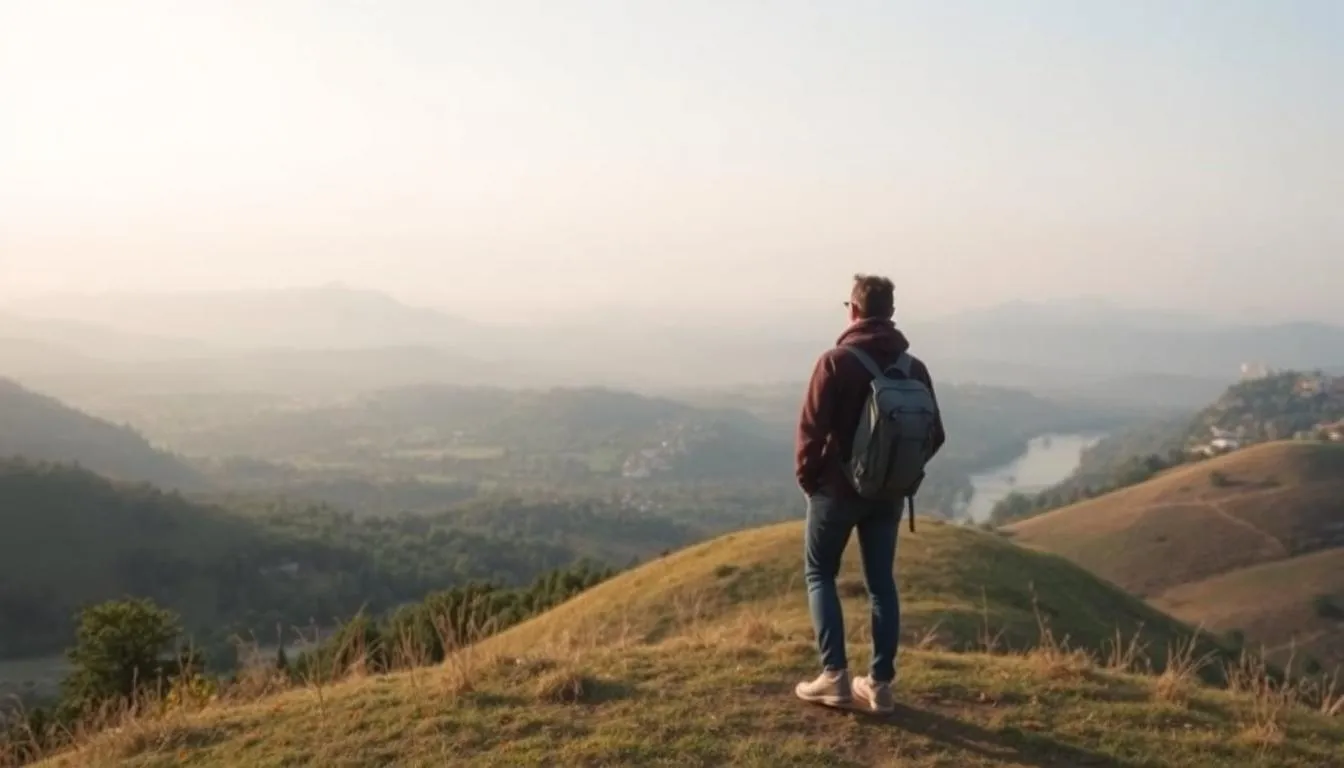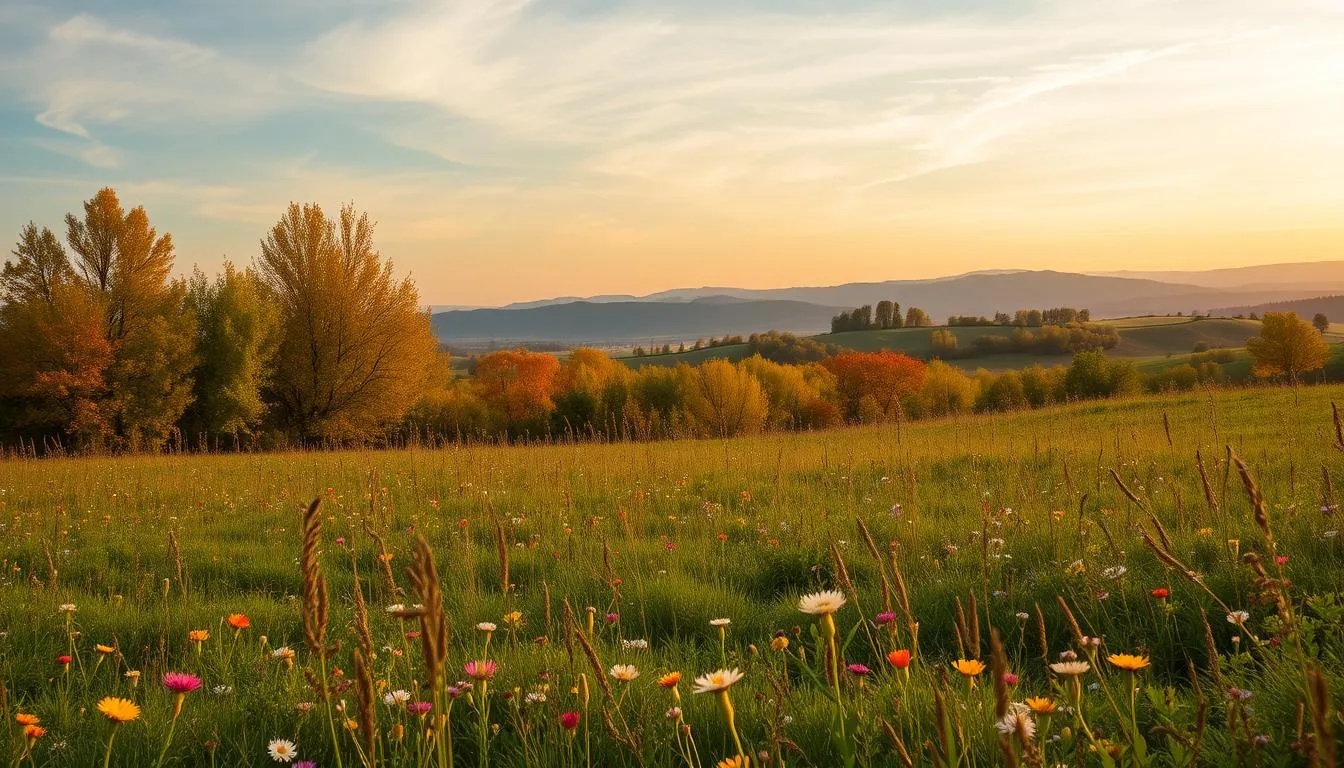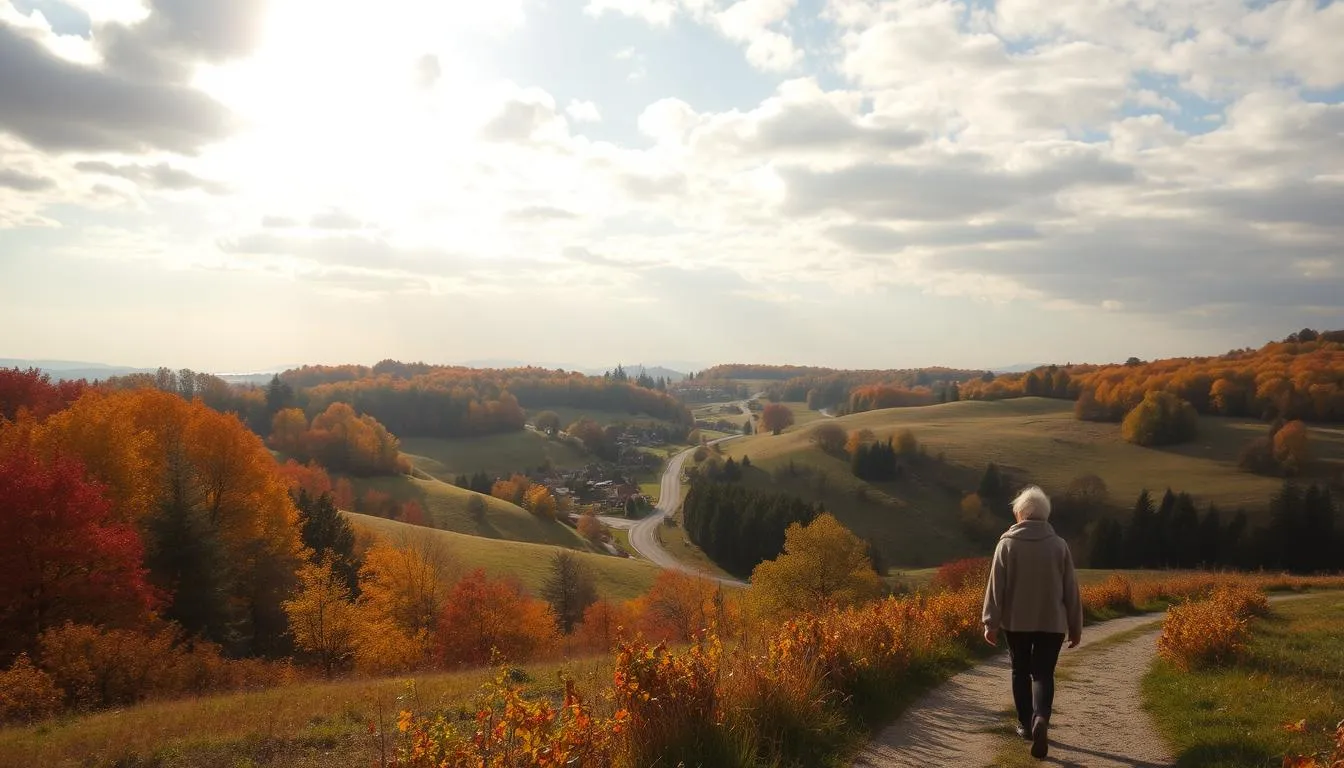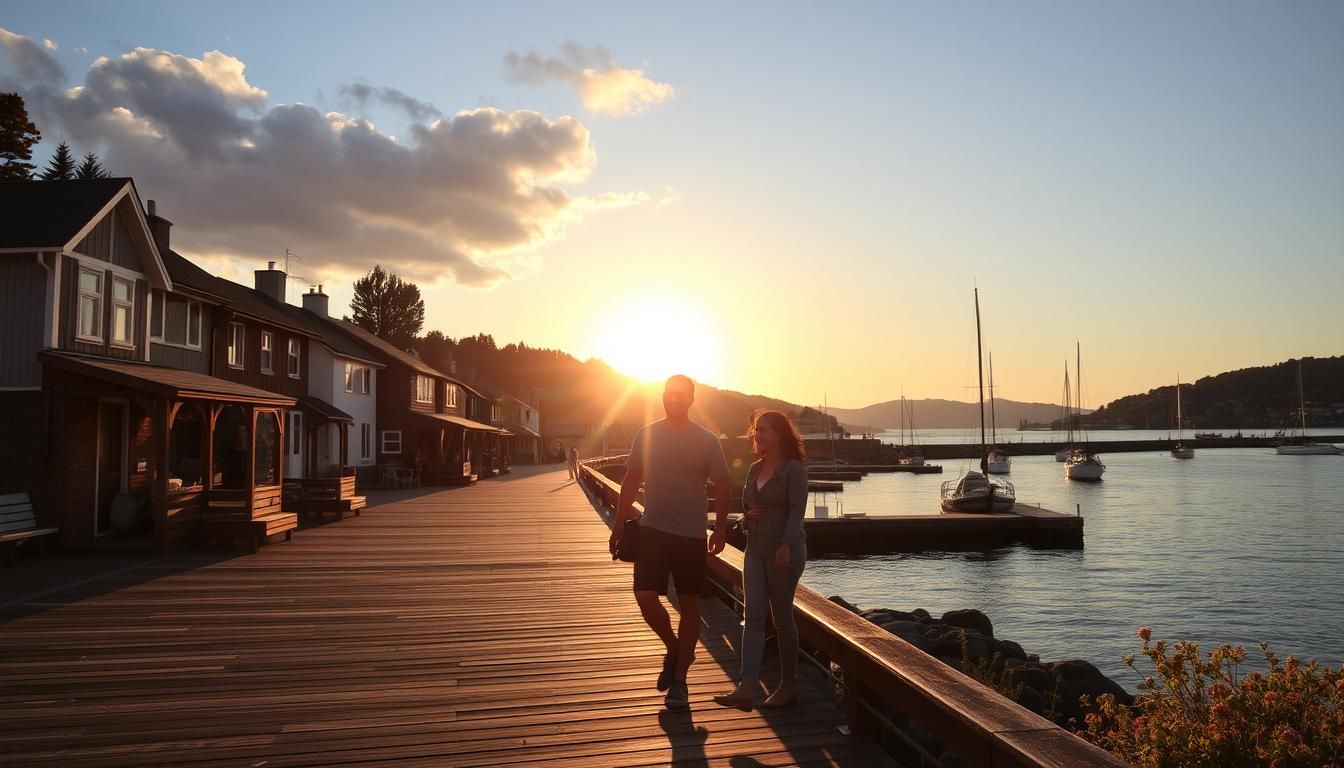Fact: In many popular destinations, prices drop as much as 40% in the window between peak and low times, making this the best period to get more for your money.
The middle months often deliver the most value. This piece explains what the shoulder season means across regions, why spring and fall frequently offer milder weather, and how that affects crowds and prices.
You’ll learn practical tips to lock in lower fares, snag flexible stays, and enjoy museums and restaurants with less waiting. Expect clear examples from the United States and key international destinations so you can pick the right months for your trip.
Bottom line: the right timing can cut costs, reduce lines, and keep experiences rich—without the stress of peak season.
Key Takeaways
- Visiting between high and low periods often brings big savings on flights and lodging.
- Spring and fall windows usually balance pleasant weather with fewer crowds.
- Plan flexible dates to spot deals before demand rises.
- Expect variable weather; pack layers and check local forecasts.
- Smaller crowds mean a more relaxed, local-feeling experience.
What Is Shoulder Season Travel and Why It Matters
The in-between period at many destinations often mixes good weather with smaller lines and smarter prices. It sits between a location’s busiest months and its quietest stretch. That makes it a sweet spot for many visitors.
Definition: This window is the time when demand dips after high season but before low season. Prices and crowds typically fall, yet most services and attractions remain open.
Why timing changes: Months vary by climate and what draws visitors. Northern Hemisphere spots often see spring and fall windows. Tropical or monsoon regions follow dry/rainy transitions instead.
 Activities matter too. Festivals, wildlife migrations, or bloom cycles can shift the best months by weeks. Confirm local dates before booking to match your interests and pack for variable weather.
Activities matter too. Festivals, wildlife migrations, or bloom cycles can shift the best months by weeks. Confirm local dates before booking to match your interests and pack for variable weather.
- Benefit: Better prices and availability than peak season.
- Trade-off: Slightly less predictability in weather than peak months.
When Is Shoulder Season? Key Months by Region
Timing your trip can unlock quieter streets, lower prices, and kinder temperatures across regions. Below is a compact, region-by-region guide to the months that most often bring those advantages.

United States
April–May and September–November are prime windows. Spring brings cherry blossoms in Washington, D.C., while fall lights up New England with foliage.
Why it works: Milder weather and easier bookings make city museums and national parks more pleasant than in peak summer.
Europe
Look to April–May and September–October for milder temps and thinner lines in Rome, Paris, and other big cities.
Hotels and tours often cost less, and outdoor cafes stay open without midsummer crowds.
Asia
March–May and September–November usually bracket wet and dry cycles. Japan’s spring blooms and calmer times in Bali are classic examples.
Check local calendars—festivals or monsoon timing can shift the best months by a few weeks.
Oceania
Hemispheres flip the calendar: spring runs September–November and fall is March–May. That makes Sydney and Queenstown attractive outside local school breaks.
- Tip: Compare two destinations by these months to pick the best match for weather, crowds, and prices.
- For a fuller definition and timing advice, see what counts as the window between peak and.
Shoulder Season Travel: Benefits, Trade‑Offs, and Expectations
A well-timed trip often means lower fares, open rooms, and more relaxed days at popular sites.
Cost savings and better availability
Benefit: In-between months usually lower prices on flights, hotels, and tours because airlines and properties drop rates to spark demand.
That can free up budget for a longer vacation or an upgraded experience at your destination.
Fewer crowds and a calmer experience
Smaller lines make museums and restaurants easier to enjoy. With fewer crowds, days feel less rushed and more authentic.

Mild weather and sustainability upsides
Temperatures are often gentler than peak-summer heat or deep winter cold, which suits walking tours and scenic drives.
Traveling during balanced demand also eases pressure on local infrastructure and spreads economic benefits to communities.
When this window isn’t ideal
- Ski trips need reliable snow; a low-snow margin can make in-between months unsuitable.
- Beachgoers seeking the hottest water temps may prefer peak season for swimming and sunbathing.
- Some attractions run reduced hours—carry a rain plan and confirm bookings in advance.
Expectation check: You’ll likely get better value and easier access, but flexibility pays off if weather or limited services affect plans.
Best Shoulder Season Destinations and Standout Experiences
Pick destinations that pair mild weather with smaller crowds to make every day feel less rushed and more rewarding.
North America
New England blooms with vivid fall foliage and scenic drives. Washington, D.C. offers springtime cherry blossoms and lighter museum lines.
Hawaii has quieter windows with whale watching and gentler temperatures for beach days.
Europe
Italy and Greece shine in spring and fall. Expect comfortable temperatures for city walks, coastal ferries, and cafes without long waits.
Asia
Japan draws crowds for cherry blossoms in spring. Bali calms in the fall, and Vietnam balances weather for coastal and mountain routes.
Oceania
Australia’s icons—from Sydney Harbour to the Great Ocean Road—feel more accessible in spring and fall. New Zealand’s autumn paints alpine and lake scenery in brilliant color.
Seasonal experiences to target
Festivals, harvests, and outdoor adventures often align with these windows. Book harvest dinners, alpine hikes, or timed-entry museums early to secure the best experiences.
“Plan nearby stops when windows overlap to squeeze more into one itinerary.”
Pro Tips to Plan Your Shoulder Season Trip and Save
Use tools and timing to turn quieter windows into big savings—and smoother days at your destination. These practical tips focus on booking, packing, and timing so you get the best value without surprises.
Smart booking strategies
Start with flexible date searches to compare fares across a few weeks; moving by two or three days can reveal cheaper flights and better deals.
Set price alerts and lock a fare when it drops. At the same time, keep last-minute options in view—hotels and tours sometimes cut rates close to departure.
Packing for variable weather
Pack breathable layers, a light waterproof jacket, and shoes that work for wet streets or hikes. These items save space and handle cool mornings and warm afternoons.
Plan around events and limited capacity
Check local calendars for festivals or big dates that can lift crowds even in quieter months. Book timed-entry attractions and top restaurants early to secure preferred times.
Use map searches to find well-connected neighborhoods with lower prices. Consider regional fare checks or a VPN to compare flight prices, and leave buffer time on travel days for weather-related delays.
“A flexible plan beats a rigid one—small shifts unlock better prices and calmer days.”
Conclusion
Conclusion
Choosing the right window lets you enjoy top sights with fewer crowds and better value. Pick a spring or fall month that fits your must-do experiences—blossoms, harvests, or hikes—and you’ll get more for your time.
Expect lower prices and shorter lines than in high season, while avoiding many limits of the low season. Pack layers for mixed weather and keep dates flexible for one rainy day or a local event.
Use the tips here to shortlist destinations, lock essentials early, and plan a trip that balances cost, comfort, and access. With smart timing, your next vacation will feel calmer, richer, and more sustainable.
FAQ
What is shoulder season travel and why does it matter?
Shoulder season travel refers to the period between peak and low periods when demand, crowds, and prices generally ease. It matters because travelers often find milder weather, lower costs on flights and hotels, and easier access to tours and attractions, creating a more relaxed, authentic trip experience.
How does timing change by destination, climate, and experience?
Timing varies by region and by what you want to do. Coastal spots might shift by beach weather, cities by major events, and mountain areas by snow conditions. Check local climate patterns and event calendars for the best windows for museums, hiking, or festivals.
When are the best months in the United States for this travel window?
In the U.S., ideal months often fall in spring (April–May) and fall (September–November). These windows offer blooming landscapes or crisp foliage, fewer tourists in major cities, and better deals on family-friendly destinations like national parks.
What about Europe—when should I plan a trip there for milder crowds?
In Europe, April–May and September–October usually deliver pleasant temperatures and thinner crowds. You’ll avoid the high-season heat in southern spots while enjoying open museums and easier dining reservations in hubs like Rome and Barcelona.
How do Asian travel windows differ from Western regions?
Asia’s ideal months depend on monsoon cycles and regional climates. March–May and September–November are common transitional windows, offering drier weather in many spots and calmer conditions for cultural sites, beaches, and city sightseeing.
When is the best time to visit Australia and New Zealand for fewer crowds?
Australia and New Zealand invert Northern Hemisphere seasons. March–May and September–November are great for milder temperatures, seasonal landscapes, and less congestion at outdoor sites and vineyards.
What are the main benefits and trade-offs of traveling in these periods?
Benefits include cost savings, smaller crowds, and milder weather that suits outdoor activities. Trade-offs may include fewer daily flights, shorter attraction opening hours, or limited seasonal services for specific activities like peak-summer beach parties or winter-only resorts.
Which destinations shine during these months for standout experiences?
In North America, New England foliage and Washington, D.C.’s blossoms stand out; Hawaii often feels quieter. Europe offers Italy and Greece with pleasant temps. Asia highlights include Japan’s cherry period and calmer Bali windows. Australia and New Zealand show strong spring and autumn scenery.
What seasonal experiences should I target for the best value and authenticity?
Seek festivals, harvest events, and outdoor adventures—wine harvests, local food fairs, and guided hikes deliver culture and flavor with fewer crowds. Booking small-group experiences lets you access local guides and sustainable tours.
How can I score deals and smart bookings for these travel windows?
Use flexible dates, sign up for fare alerts from airlines like Delta or United, and monitor hotel sites for last-minute offers. Book refundable or changeable fares and lock in key tours early when capacity is limited.
How should I pack for variable weather during transitional months?
Pack layers—light sweaters, a waterproof jacket, and mix-and-match outfits. Include versatile footwear for city walking and light hikes, plus a compact umbrella. That keeps you ready for warm afternoons and cool mornings without overpacking.
When might this travel window be a poor choice?
Avoid these windows if you need guaranteed peak conditions—think guaranteed powder for ski trips or stable, hot beach weather for sunbathing. Also consider that some attractions may run reduced schedules outside high season.
